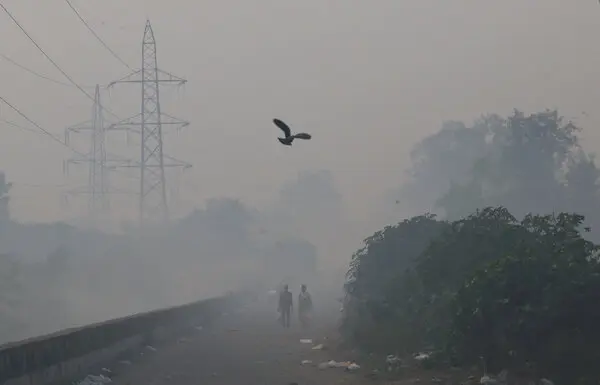New Delhi woke up to a dense blanket of smog on October 21, 2025, as air quality plunged to hazardous levels following widespread firework use during Diwali celebrations. The capital recorded an Air Quality Index (AQI) of 442, ranking it among the most polluted cities in the world and posing severe health risks for residents.
Air Quality Declines to Dangerous Levels
According to Al Jazeera, New Delhi’s AQI entered the “severe” category — levels considered dangerous for all population groups. Concentrations of fine particulate matter (PM₂.₅) soared to more than 59 times the World Health Organization’s recommended limit, making breathing conditions extremely unsafe. Early-morning data from The Indian Express showed citywide averages near 346, but several monitoring stations across the National Capital Region (NCR) exceeded 400.
Visibility Drops as Smog Blankets the City
The toxic haze caused sharp visibility reductions across roads and public areas, while residents reported irritation in the eyes and throat. Authorities urged citizens to remain indoors, avoid strenuous outdoor activities, and use air purifiers wherever possible.
Experts Cite Fireworks, Weather, and Stubble Burning
Experts attributed the pollution spike to a combination of Diwali fireworks, stagnant weather patterns with low wind speeds, and stubble burning in neighboring agricultural states such as Punjab and Haryana. According to The Watchers, these factors have trapped pollutants close to the ground, worsening New Delhi’s chronic air pollution crisis.
Authorities Activate Emergency Response Plan
In response to the deteriorating air quality, the government invoked Stage II of the Graded Response Action Plan (GRAP). The measures include restrictions on construction and industrial activities, limits on vehicle movement, and advisories for citizens to reduce outdoor exposure. Health officials issued warnings for children, the elderly, and those with respiratory or heart conditions.
Lingering Smog Expected
Environmental agencies warn that without a shift in wind patterns or rainfall, the toxic smog could persist for several days, prolonging one of the city’s worst post-Diwali pollution episodes in recent years. Meteorologists are monitoring conditions closely, hoping for natural dispersion to offer some relief to residents struggling under hazardous skies.

